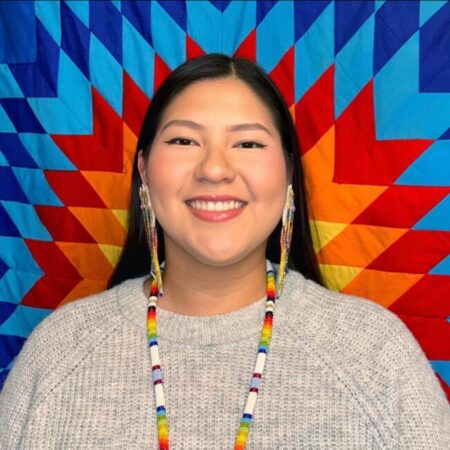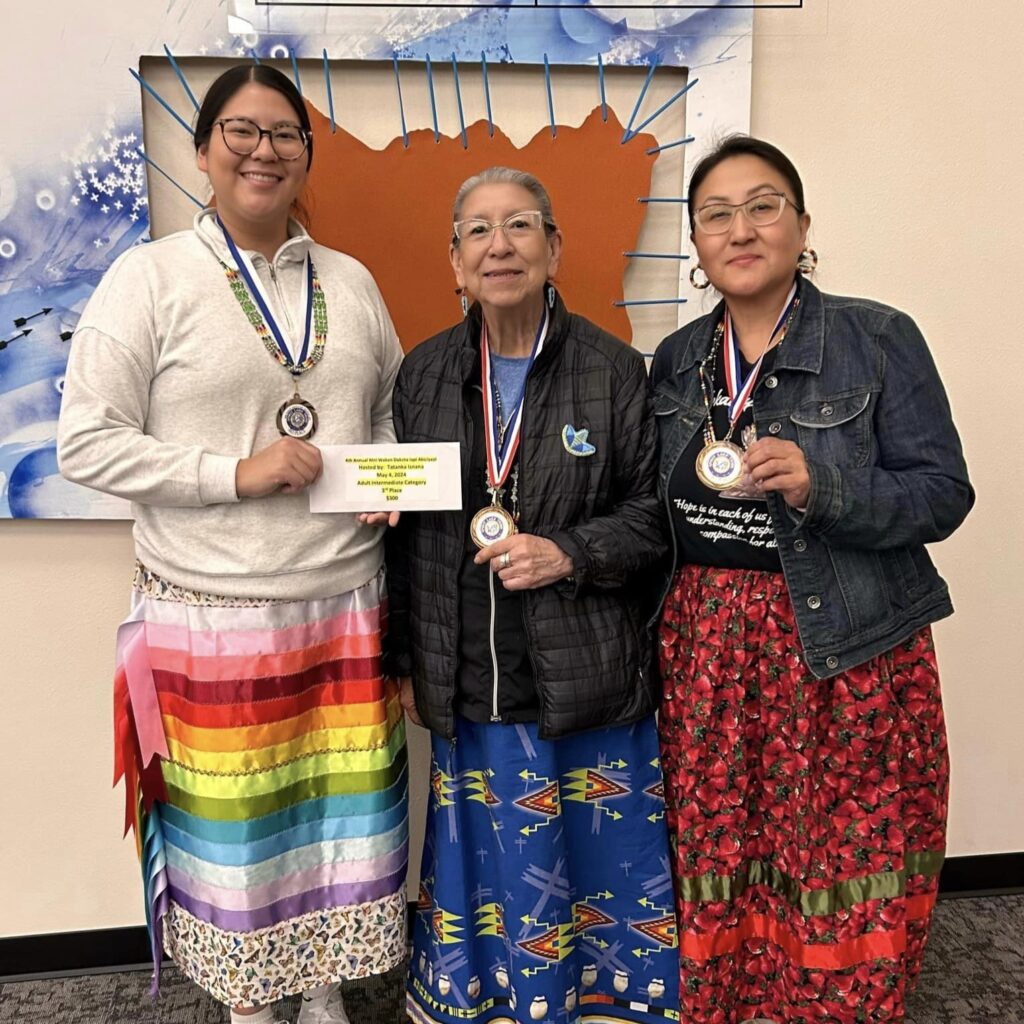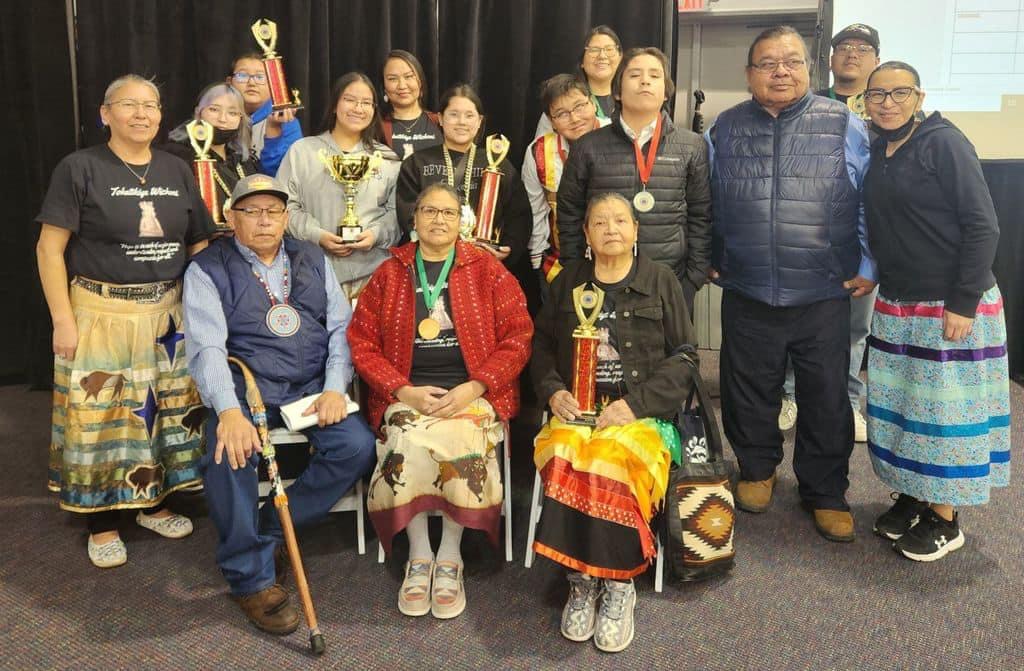
Alexis Isnana, currently in her fourth year studying Indigenous Social Work, is making significant contributions towards the preservation of the Dakota language. She has been actively involved in numerous language bowls held across North America. These competitions are critical platforms for revitalizing and maintaining indigenous languages, allowing participants like Isnana to use and promote the Dakota language in a competitive and educational setting. Her participation not only underscores her commitment to her cultural heritage but also plays a crucial role in keeping the language vibrant and relevant for future generations.
In February, Isnana represented her community, Standing Buffalo, at the Dakota Language Bowl in Tińta Wita – Prairie Island, Minnesota. This event, crucial for the celebration and preservation of the Dakota language, saw participants from across the U.S. and Canada competing in a traditional format that includes speed vocabulary, song, and command response judged by elder Dakota speakers.
Regan Alexis Isnana, a fourth-year Indigenous Social Work student at the First Nations University of Canada, is making significant strides in preserving the Dakota language by actively participating in various language bowls across North America.
In February, Isnana represented her community, Standing Buffalo, at the Dakota Language Bowl in Tińta Wita – Prairie Island, Minnesota. This event, crucial for the celebration and preservation of the Dakota language, saw participants from across the U.S. and Canada competing in a traditional format that includes speed vocabulary, song, and command response judged by elder Dakota speakers.
From a young age, Isnana was deeply immersed in the Dakota language, learning from her grandparents and continuing her education through formal classes. “My Dakota way of life gives me my identity, and my Dakota language gives me my strength,” said Isnana, reflecting on the integral role her cultural heritage plays in her life and upcoming social work career.
Despite being newcomers to the Dakota Language Bowl, Isnana and her community made a memorable debut, with their youth team winning the overall beginner category and achieving high ranks in other competitions. The event also included mixed-age teams, known as tiwahe teams, which performed impressively in their respective categories.
The revitalization efforts are supported by Harold Blacksmith and the tiwahe from Wipazoka Wakpa – Sioux Valley, Manitoba. Blacksmith has been instrumental in teaching the Dakota language in Isnana’s community, helping to maintain and strengthen this important cultural asset.
Building on their success, Isnana and her community continued to excel at subsequent language bowls, including events in Shakopee, Minnesota, and Spirit Lake, North Dakota. At these events, Isnana competed alongside both her mentor, Harold, and her grandmother, a former FNUniv Dakota language instructor, achieving top placements across various categories.
“I am not fluent yet, but that is my goal,” Isnana shared, highlighting her commitment to mastering the language. She is also actively involved in organizing a local language bowl scheduled for May 21 at Dakota Dunes with the White Cap community, further underscoring her dedication to fostering language learning and cultural preservation.
Through her participation and leadership in these language events, Isnana not only honors her heritage but also sets a powerful example for both her community and other young Indigenous people striving to keep their ancestral languages alive.

